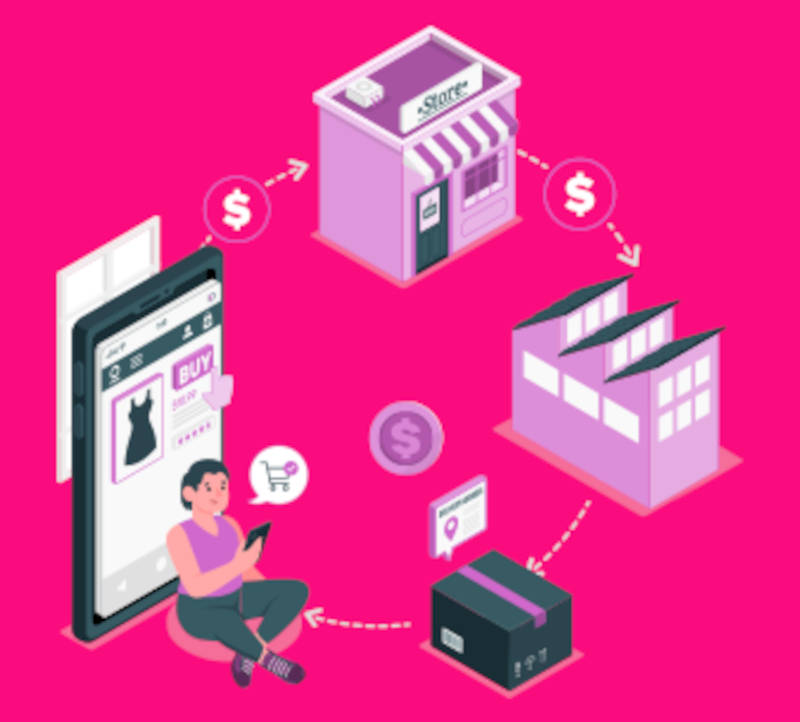Email Marketing
The Ultimate Dropshipping Guide for Beginners
Starting a business can be overwhelming, but dropshipping is one of the simplest ways to dive into e-commerce. It’s a business model that allows you to source, sell, and ship products without needing inventory.
But what is dropshipping exactly? Let’s walk through the basics, explore the pros and cons, and give you step-by-step instructions on how to create a thriving dropshipping business from scratch.
Understanding Dropshipping
What is Dropshipping?
Dropshipping is a fulfillment model where the store doesn’t keep any products in stock. Instead, when a customer places an order, the store purchases the item from a third-party supplier who then ships it directly to the customer. The retailer never handles the products physically.
This makes dropshipping appealing for entrepreneurs who want to sell products without dealing with inventory or shipping logistics.
The History of Dropshipping
Dropshipping has roots in mail-order businesses. Companies like Sears, Roebuck & Co. in the 19th century used catalogs to reach customers across the country. The mail-order model helped pioneer what we know today as dropshipping: selling products without a stockpile of inventory.
Pros and Cons of Dropshipping
Pros
Low Startup Costs
- You don’t need a warehouse, storefront, or to buy inventory upfront.
- Minimal capital investment means lower financial risk.
Reduced Overhead
- With no need to manage inventory or logistics, costs stay low.
- Expenses like rent, utilities, and storage are virtually eliminated.
Wide Product Range
- Without storage constraints, you can offer a wide array of products.
- Test and add new products quickly to meet customer demand.
Scalability
- Suppliers handle fulfillment, so it’s easier to grow your business.
- No need to worry about space or staff for handling inventory.
Location Flexibility
- You can run your dropshipping business from anywhere with internet.
- Ideal for remote work or a digital nomad lifestyle.
Reduced Financial Risk
- You only pay for products after they’re sold, lowering upfront costs.
- Minimal risk of unsold inventory.
Focus on Marketing and Sales
- Spend more time and resources on growing your business, not logistics.
Cons
Lower Profit Margins
- Higher competition often leads to lower margins.
- Volume sales may be needed for meaningful profit.
Inventory Control Issues
- Lack of control over stock levels may result in stockouts.
- Managing multiple suppliers can add complexity.
Shipping Complexities
- With multiple suppliers, coordinating shipping can be a hassle.
- Potential for longer shipping times and higher costs.
Quality Control Risks
- Limited control over product quality and presentation.
- Defective or low-quality products may reach customers.
Supplier Errors
- Supplier mistakes, like wrong items shipped, can hurt your reputation.
- You’ll need a plan for handling supplier-related issues.
Branding Limitations
- Limited options for product customization or branding.
- Harder to establish a unique identity in a crowded market.
Customer Service Challenges
- Managing returns and exchanges can be complicated.
- Customer satisfaction may depend on suppliers’ fulfillment accuracy.
Setting Up Your Dropshipping Store
Now that you know the basics and have weighed the pros and cons, let’s dive into the steps to launch your dropshipping store.
Step 1: Define Your Niche – Find Your “Blue Ocean”
Every successful business begins with identifying the right niche. Instead of diving into a crowded “red ocean” with countless competitors, aim for a “blue ocean” — a niche with fewer competitors but strong demand.
Here’s how to find your niche:
Start with a Broad Market – Health, Wealth, and Relationships are three broad markets with strong customer interest.
Select a Submarket – Go a layer deeper. For example:
Health → Weight Loss, Fitness, Nutrition
Wealth → Investing, Real Estate, Personal Finance
Relationships → Dating Advice, Marriage Advice, Family Counseling
Identify a Specific Niche – Drill down to a particular problem or interest:
Health → Weight Loss → Personalized Meal Planning
Wealth → Personal Finance → Debt Reduction Tips
Relationships → Marriage Advice → Marriage Coaching for Newlyweds
The more specific your niche, the easier it is to differentiate yourself from competitors.
Step 2: Create Your Brand Identity
Branding helps you stand out, even if you’re selling the same products as others. Strong branding builds trust and makes your store memorable.
Here’s what to consider:
Unique Selling Proposition (USP) – Define what makes your store or product different from others. This could be price, quality, branding, or customer service.
Know Your Target Audience – Understanding your ideal customers’ demographics, needs, and preferences will help you create a brand that speaks to them.
Develop Your Brand Story – Why did you start this business? A compelling story builds an emotional connection with your audience.
Visual Branding – Define your brand’s color scheme, logo, and design aesthetic. Consistent visuals help customers instantly recognize your brand.
Tone and Voice – Decide on a communication style. Is it formal, friendly, quirky, or direct?
Community Building – Engage customers and make them feel part of a community. This increases loyalty and retention.
For example, Liquid Death sells water but uses an edgy “death metal” brand vibe to connect with a unique audience. This strong branding sets them apart in a crowded market.
Step 3: Build Your Online Store
With platforms like ClickFunnels and Zendrop, building an e-commerce site for dropshipping has never been easier. With ClickFunnels’ AI Smart Funnels, you can build a complete sales funnel in under 10 minutes, simply by answering a few questions.
Customize with AI – ClickFunnels’ AI assistant, Napoleon, can help refine your funnel by adjusting copy, layout, or even design elements on the fly.
Integrate with Zendrop – Once your funnel is live, connect with Zendrop for access to millions of dropshipping products that you can add to your store.
No need for coding or web development experience — ClickFunnels and Zendrop have you covered!
Step 4: Drive Traffic to Your Store
Once your store is up, it’s time to bring in visitors, also known as “traffic.” Here are some popular methods to drive traffic:
Content Marketing – Share valuable or entertaining content on social media. Consistent posts on platforms like Instagram can drive followers to your store.
Search Engine Optimization (SEO) – Optimize your website to rank in Google for relevant keywords. For example, if you sell tennis rackets, you’d want to rank for phrases like “best tennis rackets.”
Advertising – Facebook, Google, and Instagram ads allow you to reach potential customers quickly. Ensure your ad messaging and targeting are on point to maximize ROI.
Sponsorships – Sponsor newsletters, blogs, or podcasts related to your niche for more targeted exposure.
Influencer Marketing – Partner with influencers who align with your brand to promote your products.
Affiliate Marketing – Allow affiliates to sell on your behalf for a commission. This can generate significant traffic and sales.
Step 5: Test and Optimize Products
Testing is crucial for refining your product offerings and maximizing sales. Follow these steps to identify your best-selling products:
Start Small – Offer a limited selection to see what resonates with your audience.
Analyze Sales Data – Track sales data and customer feedback to spot trends.
Run A/B Tests – Test different product images, descriptions, and price points to see what converts best.
Gather Customer Feedback – Engage customers through surveys or reviews to better understand their needs.
Introduce New Products Regularly – Rotate out underperformers and keep your selection fresh.
Final Thoughts on Dropshipping
Dropshipping is an accessible way to enter the world of e-commerce, with low initial investment and location flexibility. While there are some challenges — like lower profit margins and supplier dependency — a strong strategy can help overcome these.
With tools like ClickFunnels and Zendrop, you can quickly build, optimize, and scale your dropshipping business. Focus on creating a unique brand, driving consistent traffic, and testing products to stay competitive and grow.
Success in dropshipping is all about finding your niche, building a brand that resonates, and continuously optimizing for improvement. By staying adaptable and customer-focused, you can turn dropshipping into a profitable business.
>>>Join The One Funnel Away Challenge<<<






























